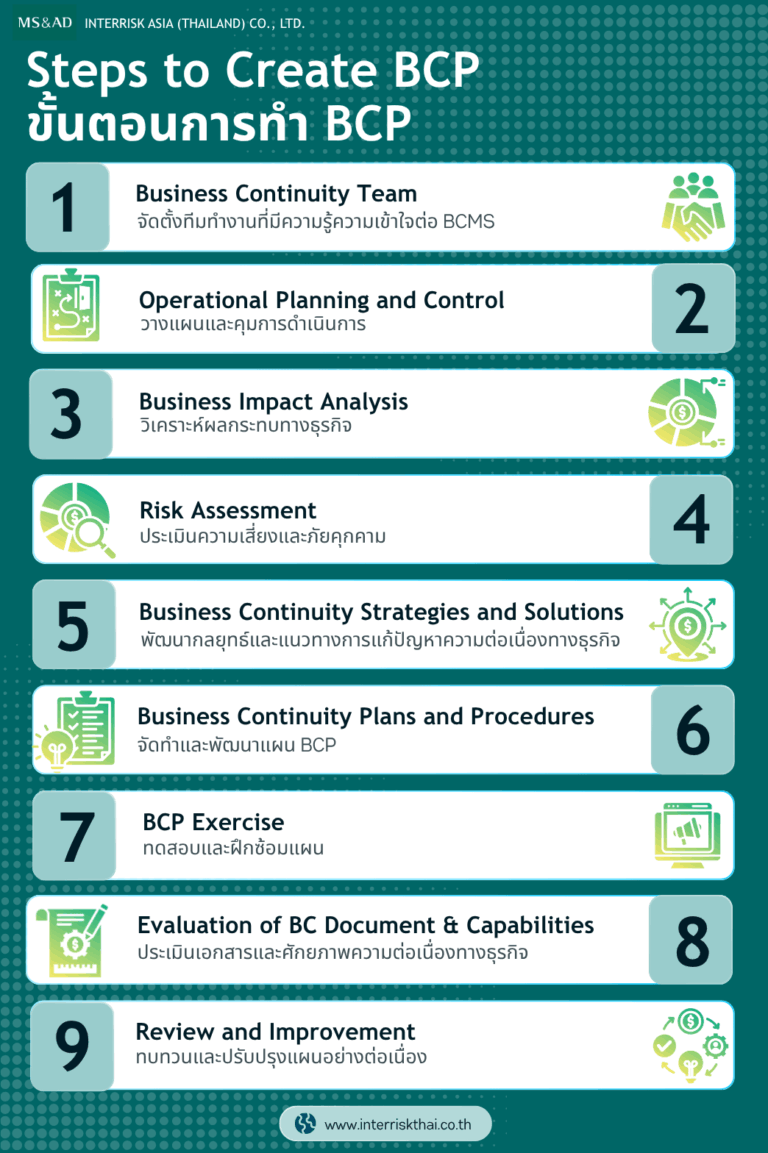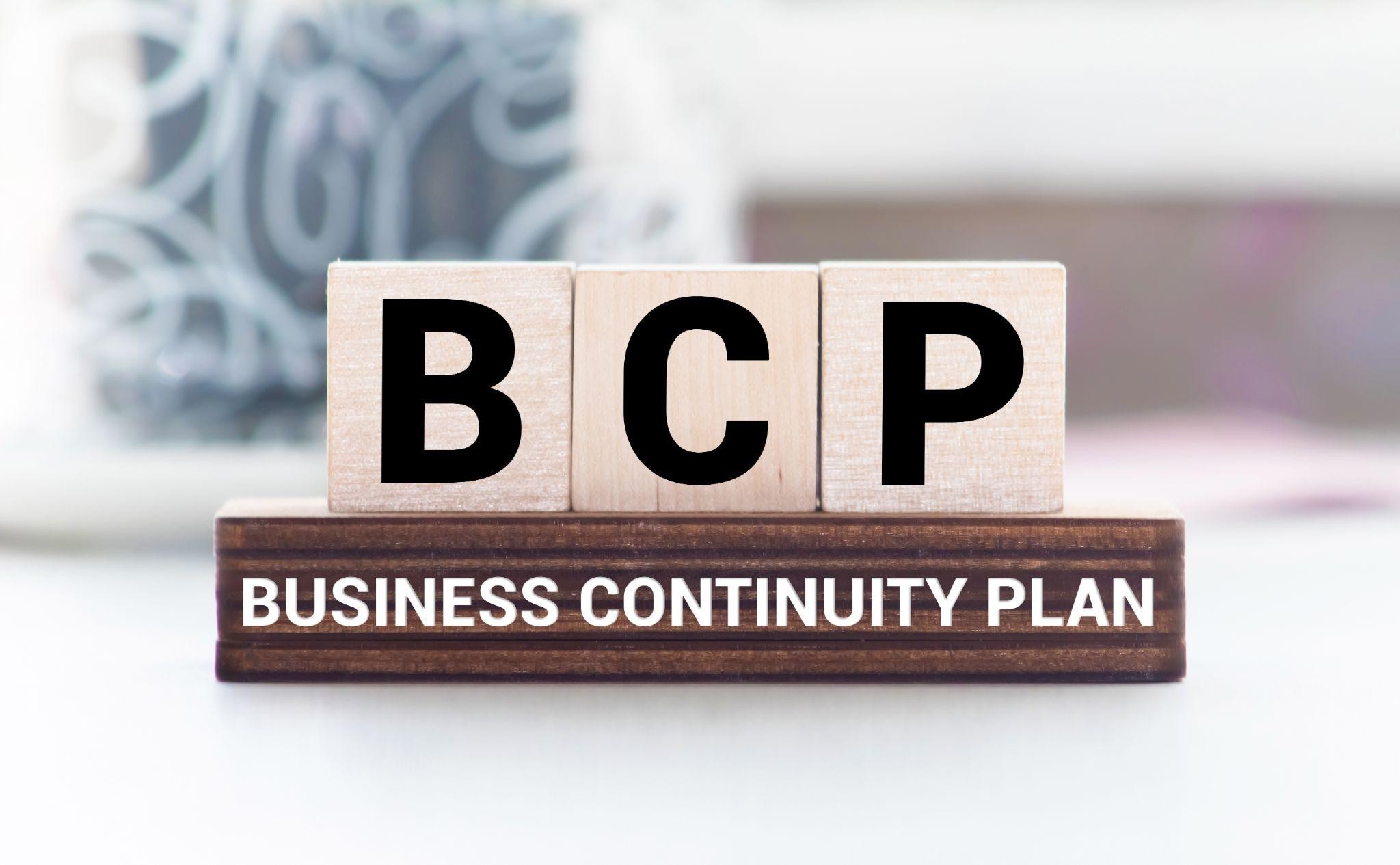In today’s world, businesses face many unpredictable challenges such as natural disasters, cyberattacks, and even pandemics. Being able to respond effectively to these events is essential. A well-prepared BCP helps your organization stay to maintain operations and minimize losses, even in difficult times. This blog will help you understand what BCP is and how to build a strong, effective plan for your business.
BCP is ?
BCP stands for Business Continuity Plan. It is a strategy that organizations develop in advance to prepare for unexpected disruptions. The goal is to help the business continue operating and quickly recover critical functions after events such as natural disasters, fires, cyberattacks, pandemics, IT system failures, or even protests. A BCP helps minimize the impact of these events and ensures that essential products and services can still be delivered to customers.
The main purpose of a BCP is to ensure that key resources, such as people, facilities, technology, and data etc., remain available and functional during a crisis. It involves the entire organization, including the interdependencies between departments and processes. If your business is like a complex machine, the BCP would be like a user manual that tells you what to do when something goes wrong. It ensures you have spare parts and a plan to keep the machine running or get it back up and running as quickly as possible. In short, BCP is about risk management and preparedness, not reactive crisis handling.
Why is BCP Important for Organizations?
In an era where risks can arise suddenly and have widespread impacts. That is why a Business Continuity Plan (BCP) is a critical component of organizational resilience for managing disruptions effectively. Organizations that are resilient and can recover quickly from interruptions gain a competitive edge. Here’s why BCP matters:
Minimizes the Impact of Emergencies
A well-prepared BCP provides clear guidelines for responding to emergencies. For example, if your IT system fails, the plan outlines which backup system to switch to. If a factory is flooded, it specifies where production can be relocated. BCP also helps reduce key recovery metrics like Recovery Time Objective (RTO) and Maximum Tolerable Period of Disruption (MTPD).
Reduces Financial Losses
Disruptions can lead to significant financial losses, lost revenue, increased costs, or penalties for non-compliance. A BCP helps minimize downtime, which in turn reduces financial impact. In many cases, the cost of not having a BCP far exceeds the investment in creating one.
Protects Reputation and Customer Trust
In a fast-paced communication era, a quick and professional response to crises shows preparedness and builds trust with customers, investors, and stakeholders. On the other hand, poor crisis management can severely damage your reputation and erode confidence.
Ensures Compliance with Industry Standards
Industries like finance, energy, and healthcare often require a BCP to meet regulatory standards. A strong BCP helps your organization stay compliant and avoid legal or operational issues.
Supports Employee Safety and Morale
During a crisis, employees may feel stressed or unsafe. A clear BCP provides direction, defines roles and responsibilities, and demonstrates the organization’s commitment to employee well-being.
Enables Informed Decision-Making Under Pressure
Crises demand quick decisions under pressure. A BCP offers predefined strategies and decision-making frameworks, allowing leaders to act decisively and effectively—rather than scrambling for solutions in the moment.
What are BCP's Key Component Include ?
Creating a Business Continuity Plan (BCP) involves more than just writing a document. It’s about designing a set of strategies, procedures, and resources that work together to help your organization respond to disruptions and maintain operations. According to the ISO 22301 standard for Business Continuity Management Systems, a complete BCP should include:
Objectives and scope
Roles and responsibilities for executing the plan
Actions to implement the solutions; communication plan, response procedure and recovery process
Supporting information needs to activate, operate, coordinate and communication the team’s actions
Internal and external interdependencies
Resource requirements
Reporting requirements
Process for standing down
Step to Build Business Continuity Plan
Developing a comprehensive and effective Business Continuity Plan (BCP) requires careful planning, collaboration, and ongoing commitment. Here are the key steps involved:

- Form the team with knowledge of BCMS
- Conduct the operational planning and control
- Conduct the Business Impact Analysis
- Perform Risk Assessment
- Develop business continuity strategies and solutions
- Create and document BCP
- Test and exercise the BCP
- Evaluate the BC document and capabilities
- Review and improve continuously
Which Organization Should Have a BCP?
A lot of people think Business Continuity Plans (BCP) is only necessary for large corporations. In reality, BCP is essential for any organization that wants to avoid business disruptions, regardless of its size, industry, or complexity. While the scope and details of a BCP may differ, the fundamental need for continuity is universal. BCP is especially relevant for:
Financial institutions such as banks, investment firms, and insurance companies
Infrastructure providers like electricity, water, gas, telecommunications, and IT services
Manufacturing businesses, including SMEs and companies reliant on a single key machine
Service-based businesses such as hotels, hospitals, online platforms, and 24/7 service providers
Public sector institutions serving citizens
Businesses subject to regulatory or industry standards
Organizations seeking coverage through Business Interruption Insurance
In essence, operating without a BCP is equivalent to relying on luck, which is not a sustainable strategy in today’s unpredictable world.
Comprehensive BCP Solutions with InterRisk Asia
In today’s unpredictable business environment, disruptions can occur without warning. A well-structured Business Continuity Plan (BCP) is essential for building organizational resilience and maintaining stakeholder confidence. Whether you’re starting from scratch or refining an existing plan, InterRisk Asia offers expert guidance to ensure your organization remains operational, even in times of crisis.
InterRisk Asia is a leading business continuity consulting firm in Thailand, operates under the MS&AD Group from Japan.
Our Services
Why Choose InterRisk:
Experienced consultants with hands-on BCMS expertise
Customized planning tailored to your business context.
Practical tools and templates, with expert support for testing and improvement.
